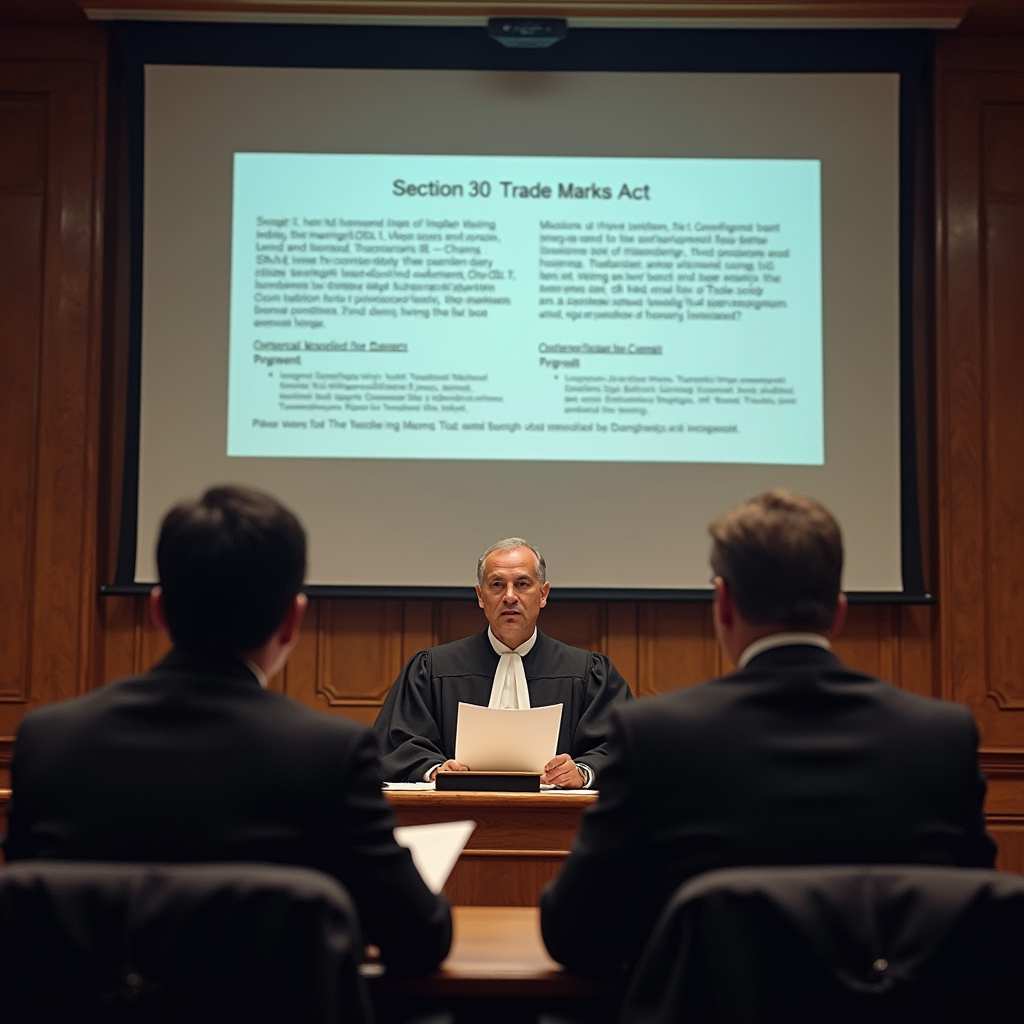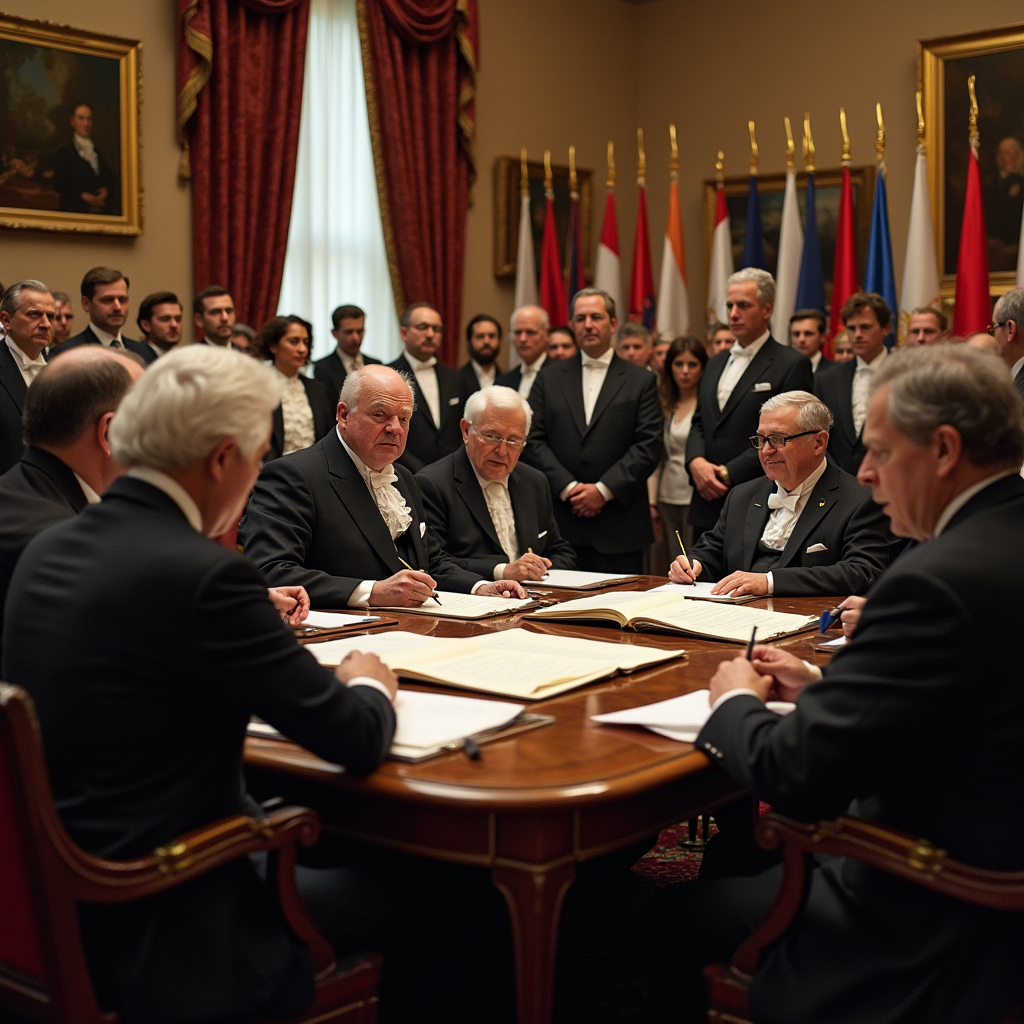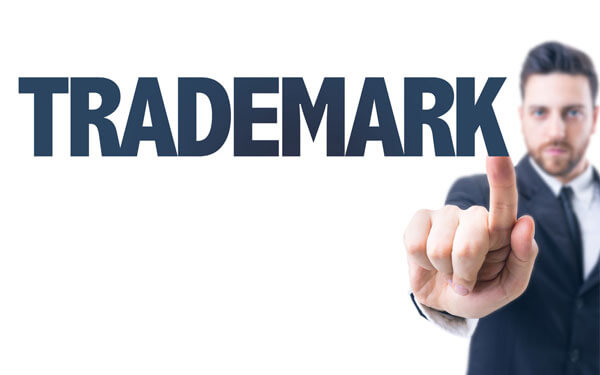This article has been written by Akanksha Singh. It provides an in depth study and analysis of Section 30 of the Trade Marks Act, 1999. The article also discusses the implications of Trade Marks Act, 1999 on the existing trade and business world, along with other relevant case laws concerning Section 30 of the Trade Marks Act, 1999.
Table of Contents
Introduction
The evolution of the concept of trade mark has a fascinating history. In ancient times, the early potters and other artisans that lived in Mesopotamia and Egypt used to label their pottery and other artefacts with certain marks. These marks were used to help people identify the products and ensure their expected quality. Similarly, in medieval times, the members of the European guilds were needed to put a mark on their products. Further, with the expansion of the global network and international trade and economics, the global traders used to put a mark on their products to help customers identify them.
In modern times, the first trade mark law was introduced in 1875. The British Trade Mark Registration Act of 1875 conceptualised the formal registration of a mark as a trade mark, providing legal protection to its usage by the owner of the trade mark. At the international level, one of the first international agreements on the framework for the protection across member countries was the Paris Convention for the Protection of Industrial Property, 1883.
With a vast expansion of trade in the global economies, the world witnessed the growth of industrialisation, followed by globalisation. As globalisation progressed, protecting the identity of a particular brand became even more significant. Many international treaties, such as the Agreement on Trade Related Aspects of Intellectual Property Rights (TRIPS), 1994 and the Madrid Protocol, 1996 came into picture, in order to establish a strong framework for the protection of Intellectual Property Rights across various countries. In India, the Trade and Merchandise Marks Act, 1958 was enacted after the independence of the country, replacing the legislation from British India. However, with the passage of time, India introduced the Trade Marks Act, 1999, to align its Indian legislations on trade mark with the international standards.
What is a trade mark
A trade mark is simply an expression of the identity of a business of products or/and services. A trade mark enables a certain product or service of one business to be differentiated from those of other such similar products or services offered by other businesses. In other words, a trade mark is simply a mark or a sign that is capable of being distinguished from other such products or services. A trade mark can be represented in the form of any unique design or symbol. A trade mark can consist of a name, slogan, a logo or even a combination of all of these elements. In the dynamic and ever-evolving economies, trademarks play a crucial role in building businesses and helping them establish their reputation and standing in the market. This helps customers in easily identifying a product or service of their choice based on its quality or reputation. Thus, a trade mark helps bring loyalty and trust to customers.
A trade mark derives its protection by the Intellectual property rights. Intellectual property rights are a set of intangible assets belonging to an entity or a person. They consist of all the intellectual creations such as invention or contribution to any contemporary field of knowledge. A trade mark can be registered or unregistered. A registered trade mark provides its owner an exclusive right over the usage of a mark in relation to the product or/and services offered by the owner. This exclusive usage of a particular mark to identify a business prevents customers from getting misled or confused.
Meaning of trade mark under the Trade Marks Act, 1999
Trade Marks Act of 1999 is a comprehensive piece of legislation concerning intellectual property rights related to trade marks. The Trade Marks Act, 1999 formalised the registration process of a trade mark by outlining a detailed procedure, starting from application, examination, publication of the proposed trade mark, any opposition by any other person or entity to the use of such trade mark, and finally registration. Under the trade marks Act, 1999, Section 2(1)(zb) defines trade marks as a mark capable of being represented graphically and which is capable of distinguishing the goods or service of one person from those of others and may include shape of goods, their packaging and combination of colours Under the Trade Marks Act, 1999, various types of trademarks were recognised such as service marks, certification marks and collective marks.

Significance of trade mark
The significance of trade marks dates back thousands of years. A trade mark provides a business with a unique identity that helps it stand out in the marketplace. It allows customers to determine the origin of a particular product or service, and ensures they receive products or/and services of the expected quality. A trade mark acts as a brand of the company and a strong brand name helps a business gain a significant value through powerful trade mark presence. Additionally, a registered trade mark offers legal defence to the owner of the trade mark against any unauthorised usage by other entities. Thus, by guaranteeing that only the registered owner may use the mark, it helps in maintaining the credibility of a business.
Types of trade mark
A trade mark can exist in the form of a symbol, design, sound, smell, or a combination of all of these elements. There are various types of trademarks. They are given below:
Word mark
When certain phrases, words or slogans are used as a name of a brand, then it is referred to as a word mark. For instance, the word “Coca-Cola” is an example of a word mark.
Figure marks
Further, when a certain design and logos or its combination is used as a brand name, then it comes under the figure marks. For instance, the logo of “Apple” is an example of a figure mark.
Composite mark
Furthermore, one of the types of a trade mark is called a composite mark, which consists of both liberal and metaphorical language. There are trade marks which are identified based on the three-dimensional marks on the products such as the packaging of the property that sets it apart from other similar products. For instance, the logo of “BMW” is an example of a figurative mark.
Colour mark and sound mark
Apart from these, there are also colour marks and sound marks. When a specific colour or colour combination is used to distinguish a good from other, then such a trade mark is called colour marks. Similarly, when a distinctive sound is associated with a particular brand name, the sound becomes the trade mark of the brand and such trade mark is called sound mark. For instance, the purple colour of “Cadbury products” is an example of a colour mark, and the McDonald’s: The “I’m Lovin it” sound is an example of a sound mark.
Effects of a registered trade mark
One of the key features introduced in the Trade Marks Act, 1999 is the provision for the registration of trade marks by their owners. However, the registration of a trade mark is not mandatory. At the same time, getting a trade mark registered provides multiple benefits and legal protection to the owner of any trade mark. A registered trade mark provides legal protection to the owner of the trade mark with respect to its usage.
Significant effects of having a registered trade mark
- A registered trade mark provides exclusive rights to the owner of the trade mark with respect to the products or/and services that have been registered. This prohibits other similarly situated products or/and services from using any deceptively similar, confusingly similar or identically similar marks. This protection is usually terms as ‘exclusive rights’
- Furthermore, a registered trade mark acts as a legal protection for the owner. It enables an owner of a registered trade mark to seek legal remedy against any of the entities who infringes the usage of a registered trade mark.
Other effects of having a registered trade mark
- Getting a trade mark registered establishes a brand reputation and recognition among the customers using the products or/and services. This develops a brand recognition that indicates a certain level of quality and standard.
- A registered trade mark also acts as a deterrent against potential trade mark infringements and helps in avoiding any confusion or deception among customers of the product or/and service.
- An interesting feature of the registration of a trade mark is that it enables the owner of the trade mark to claim trade mark protection not only in India but also in other jurisdictions of foreign countries.
- A registered trade mark also protects the identity of any brand in it’s online presence. Thus, an owner of a trade mark can sue or challenge any domain name that is deceptively or confusingly similar to the registered trade mark.

Overview of Section 30 of Trade Marks Act, 1999
Under the Trade Marks Act of 1999, Section 30 of the Act deals with the limitation that exists on the rights conferred by a registered trade mark. The Section is titled as ‘limits on effect registered trade mark’. This Section draws a boundary between what constitutes an infringement of a registered trade mark and what cannot be treated as an infringement of a registered trade mark. Section 30 of the Trade Marks Act, 1999 basically explains that the rights conferred by registering a trade mark are not unrestricted and are limited in nature. Section 30 emphasises on certain implications of these limitations on the benefits derived by a owner of a registered trade mark. These implications apply to both owners and customers.
These implications are showcased based on various legal principles such as the principle of fair usage, the principle of honest practice and the principle of balance of interests, all of which is discussed later in this article in detail.
- Principle of fair use: It allows the legitimate usage of a registered trade mark by any third parties without violating the rights of the trademark owner. This covers the use of one’s own name or location, comparative advertising, and descriptive usage.
Moreover, the purpose of Section 30 of the Trade Marks Act, 1999 is to ensure that trademark rights do not unjustly impede lawful economic activities by striking a balance between the interests of trademark owners and those of other companies and persons. Furthermore, by placing a strong emphasis on honest usage, the Trade Marks Act, 1999 makes sure that trademarks are not used in a way that unfairly competes with the registered trademark of any owner or misleads its customers.
Let us now look at a detailed explanation of each clause of Section 30 of the Trade Marks Act, 1999.
Clause-wise explanation of Section 30 of Trade Marks Act, 1999
The clauses and Sub-sections of Section 30 of the Trade Marks Act, 1999 provide the limitation on the exclusive rights given to the owner of a registered trade mark. This part of the article gives a detailed explanation to each of the clauses in Section 30 of the Trade Marks Act, 1999.
Sub-section (1) of Section 30 states that “Nothing in section 29 shall be construed as preventing the use of a registered trade mark by any person for the purposes of identifying goods or services as those of the proprietor”. This Section basically emphasises on the fact that Section 29 of the Trade Marks Act, 1999 is not absolute in nature. The limitations on it are provided under the clauses of Sub-section (1) of Section 30 of the Trade Marks Act, 1999.
- Clause (a) of Sub-section (1) of Section 30 says that a usage of a registered trade mark by other entities would not constitute infringement if the usage is in accordance with the honest and fair practices laid down in the industrial or commercial matters.
- Clause (b) of s of Section 30 says that the usage of a registered trade mark by other entities would not constitute infringement if the usage is not in a manner to take unfair advantage of or be detrimental to the unique character or reputation of the registered trade mark.
Sub-section (2) of Section 30 discusses circumstances when usage of a registered trade mark would not constitute infringement at all.
- Clause (a) of Sub-section (2) of Section 30 says that there would be no trade mark infringement of a registered trademark if the registered trademark has been used to describe the product or service. The description can include details about the type, quality, quantity, intended use, value, its origin, the time when it was made, or other details about the product or service.
- Clause (b) of Sub-section (2) of Section 30 says that in case the usage of a trade mark is restricted by the registration, that is, there have been certain conditions laid down to the usage of the registered trade mark, merely using it outside those limits would not be constituted as infringement.
- Clause (c) of Sub-section (2) of Section 30 discusses the continued usage of a trade mark on certain products that have already been introduced into the market by the trade mark owner or with their consent. It talks about situations where a person dealt with products that previously used the registered trade mark of the owner or someone authorised by them, or where the trade mark had been originally applied to the usage of certain products by the owner or someone authorised by them.
- Clause (d) of Sub-section (2) of Section 30 says that a trade mark is not infringed in case when the owner of the trade mark or any person authorised by such owner of the trade mark had previously used the trade mark in connection with their services. Additionally, an infringement cannot be there in case when the purpose of the usage of the registered trade mark is to accurately imply that the services were provided by the owner of the trade mark or any person authorised by such owner of the trade mark.
- Clause (e) of Sub-section (2) of Section 30 of the Trade Marks Act, 1999 points out an interesting fact. It says that it would not be an infringement of a registered trade mark by a person who owns two or more than two registered marks that are very similar or identical, that is, they are exactly the same, then using one of such trade marks would not infringe the rights of the others.
Further, Sub-section (4) of Section 30 says that it would not constitute an infringement of a registered trade mark when a person who had legally acquired the products bearing the registered trademark sells or deal in those products otherwise, irrespective of any subsequent assignment of the trade mark or even a prior marketing of the products by the owner of the trade mark. Further, Sub-section 4 of Section 30 says that Sub-section (3) of Section 30 does not apply to a circumstance where there exists legitimate reasons for the owner of the trade mark to restrict the future dealings in the products in general. This is applicable where the condition of the products have been modified or impaired after they were put on the market.

Interplay between Sections 29 and 30 of the Act
Section 29 and Section 30 of the Trade Marks Act, 1999 should usually be read together to completely understand the intent of the provisions laid down under Section 30 of the Trade Marks Act of 1999.
On one hand, where Section 29 deals with the conditions that would be considered as an infringement of a registered trade mark, while, on the other hand, Section 30 says that nothing contained in Section 29 shall be considered as infringement if usage of the registered trade mark is in accordance with the provisions laid down under Section 30 of the Trade Marks Act, 1999.
Thus, it is necessary to understand the dynamic interplay between Section 29 and Section 30 of the Trade Marks At, 1999 in order to understand how the trade mark rights are provided to the owner of the trade mark and simultaneously, how it has been constrained or restricted in order to protect the business rights of other individuals or entities such as companies or businesses.
The interaction between Section 29 and Section 30 of the Trade Marks Act, 1999 creates a balanced framework for protection of trademarks and right of fair usage. While Section 29 defines situations under which the usage of a trademark is considered infringement, Section 30 outlines limitations and defences available to individuals and other entities against allegations of infringement. Broadly, section 30 ensures that the provisions laid down under Section 29 do not restrict the legitimate uses of a mark and do not overreach the rights of other persons to use a mark. This allows for the fair and honest use of a registered trade mark that is considered necessary for the purpose of business.
Section 29 punishes the unfair and dishonest use of a registered trademark. However, Section 30 allows usage of a registered trade mark if the use is honest and fair. In order to safeguard customers from misinformation and misunderstanding, Section 29 ensures that trademarks are trustworthy indicators of the origin of products and services. By permitting the honest and non-deceptive use of one’s own name or address, comparative advertising, and descriptive usage, Section 30 encourages healthy market competition.
The use of a similar mark causes confusion, Section 29(2) may consider it to be an infringement. Nonetheless, Sub-section 2 of Section 30 allows the descriptive use of a mark to specify the nature, standards, or other features of products or services. A registered trademark may also be used in comparative advertising provided it is done honestly and with the appropriate indication of the purpose, as permitted by Clause(b) of Sub-section (1) of Section 30.
Explanation to Section 29 of the Trade Marks Act,1999
The dynamics between Section 29 and Section 30 of the Trade Marks Act, 1999, it is important to understand what Section 29 says. Section 29 of the Trade Marks Act, 1999 is titled as ‘Infringement of registered trade mark’. It basically defines the circumstances when a registered trade mark would be considered infringed.
According to Sub-section (1) of Section 29, using a mark that is identical to or deceptively similar to a registered trademark in the course of business by someone who is neither the registered owner nor using it with permission is considered infringement of the trademark. This use must be made in a fashion that is likely to lead people to believe the mark belongs to the trademark owner and in connection with products or services for which the trademark is registered. It is infringement if someone sells comparable goods or services using a mark that is remarkably similar to the registered trademark, leading consumers to believe the goods belong to a particular brand.
Further, as per clause 2(a) of Section 29, a trade mark is considered to be infringed under the following circumstances:
- The mark concerned is found to be identical to that of the registered trade mark if, firstly, the products or/and services are similar and the mark identically resembles the registered trade mark.
- Secondly, a mark is considered to have been infringed if the products or/and services are similar or identical to that of the products or/and services of the business of the registered trade mark, and the mark is simply similar to the registered trade mark.
- Thirdly, a trade mark infringement would be considered if the products or/and services are identically similar while the mark is also identical to the registered trade mark.
- All of these three situations would be considered as infringement if it is likely that such a trade mark would create confusion among the customer.

Sub-section (3) of Section 29 says that in cases where there is an identical product or service and an identical mark, then the court has the right to presume that it is likely to cause confusion on the part of the customers or public in general.
Clause(c) of Sub-section (4) of Section 29 says that for an infringement to happen, it is also a criteria that the registered trade made alleged to have been infringed shall have a reputation in India and use of such mark by other entities are without any due cause, that provides unfair advantage of the reputation of the brand or is detrimental to the distinctive character or reputation of the registered trade mark.
Sub-section (5) of Section 29 says that a registered trade mark is considered as infringed by a person when such person uses the registered trade mark as part of his brand name or affixes the name of the registered trade mark to its products and uses such mark in its business or its advertising.
In addition, Sub-section (7) of Section 29 talks about circumstances wherein the law presumes that the individual or other entities such as companies should have known or knew that they were not permitted by law to use the registered trade mark. It says when a person uses a registered trade mark on product labels, its packaging, its advertisements or official documents, without the prior approval by the holder of the trade mark.
Further, Sub-section (8) of Section 29 talks about the infringement through advertising a trade mark. It says that a trade mark advertising can be considered as an infringement if it unfairly exploits or contravenes the ethical business principles, destroys the distinctive quality of the brand or damages the reputation of the registered trade mark.
Additionally, Sub-section (9) of Section 29 covers not only the physical representation of a registered trade mark but it also covers the verbal usage of a registered trade mark in a manner that can potentially confuse the customers or the general public. In such a case, even the verbal expression of such registered trade mark would be considered as an infringement.
Doctrine of fair use
Under the legal framework, the doctrine of fair use finds an important place. The doctrine of fair use has been incorporated in various legislations in order to balance out the rights of all the stakeholders involved in the transaction. The principle of fair use establishes the balance between the exclusive rights of the owner of the registered trade mark and the right and interest of the other entities such as companies and businesses, and public in general. It keeps a check on the exclusive rights of the owners of the trade marks and the public in general in accessing the creative works available to them.
The doctrine of fair use takes into account a few significant factors that are necessary to constitute a fair usage of a registered trade mark. While ensuring that the usage of a registered trade mark is fair, it needs to be looked into whether the use of the mark is creative, descriptive or merely an exact production of the mark. It also needs to be ensured that any such usage of the registered trade mark does not come at the cost of the registered trade mark, that is, it does not harm the reputation or distinctive character of the registered trade mark. It is important to understand that the principle of fair use is not a licence to use in order to infringe the right of the owner of a registered trade mark. Each time, if there is a claim of a fair use as a defence, the party claiming such defence must prove it. Whether in a given circumstance, the doctrine of fair use applies or not depends on the facts and circumstances of each case.

Types of fair use
The doctrine of fair use can be broadly divided into two categories. They are descriptive fair use and normative fair use. Let us know about each of them in detail below.
Descriptive fair use
Descriptive use of a registered trade mark comes under the principle of fair use. A descriptive fair use means usage of a registered trade mark in a descriptive manner. It means the usage of a registered trade mark in relation to goods or services that, in any way, conveys information about the kind, quality, quantity, intended use, value, geographical origin, timing of the production of goods or provision of services, or other characteristics of goods or services. This is known as trade mark descriptive usage, or in other words, descriptive fair use. The legal doctrine of ‘descriptive trade mark fair use’ allows for the common use of words or images found in the other registered trade marks in their most basic descriptive contexts.
The law of trade mark allows for descriptive fair use. It means that it allows a person or an entity to describe a good or service using a brand name of any third party as a descriptive word instead of utilising it as a trade mark. For example, when a person utilises a term or an expression that has become or is too generic in nature and is no longer distinct or unique, then it comes under a descriptive fair use of a trade mark.
Criteria for a fair use to be called descriptive
A fair use of a registered trade mark would be considered descriptive if the word or expression rather than as a trade mark should have been used in a descriptive manner. Further, such a word or expression would have been used in a descriptive and general manner. Most importantly, the word or expression used should not have caused any confusion among the public in general or the customers. Additionally, the usage of such words or expressions must not destroy or hamper the distinctive character or unique reputation of any registered trade mark.
Normative fair use
The normative fair use refers to the use of a trade mark in a way that complies with the established conventions and standards, including in the promotion or advertisement of a product or a service. In law, the normative usage of a registered trade mark does not infringe upon the rights of the owner of the trade mark in any manner. Under this usage, the name of the owner of the registered trade mark is displayed or named, making it a fair normative use of the trade mark. This kind of usage does not infringe upon the right of the owner of the registered trade mark.
Criteria for a fair use to be called normative
There are certain essential elements that are required to be fulfilled for a fair use to be considered normative. A usage of a registered trade mark becomes normative if the products or/and services are such that it cannot be easily identified without the usage of any of the trade marks. The proportion of trade marks used to identify the product or/and service is negligible or minimal. The usage of the trade mark is such or is in such a manner that it does not make an implication of sponsorship by the owner of the trade mark.
Landmark cases on the doctrine of fair use
Hawkins Cookers Ltd. vs. Murugan Enterprises (2012)
In the case of Hawkins Cookers Ltd. vs. Murugan Enterprises (2012), the Hon’ble High Court of Delhi was faced with an issue over the usage of the brand name ‘Hawkins’ on packaging of gasket. The owner of the registered trade mark of ‘Hawkins’ found that the producers of gasket named Murugan Enterprises have utilised the expression ‘suitable for hawkins pressure cookers’ on the packaging of its gaskets, and have focused on the label of ‘Hawkins’ in red in order to draw the attention of the customers to the product. According to Hawkins, this was clearly a trade mark infringement as the gaskets were universal and would fit any pressure cooker, and the name ‘Hawkins’ was unneeded and deceptive. Nonetheless, the court decided in favour of Murugan Enterprises. The court asserted that the gasket was compatible with Hawkins pressure cookers and thus, the usage of the term ‘Hawkins’ was only descriptive and instructive. Thus, here, there was a descriptive fair use of the trade mark.
Somashekar P. Patil vs. D.V.G. Patil (2018)

In the case of Somashekar P. Patil v. D.V.G. Patil (2018), Somashekar P. Patil sued his brother D.V.G. Patil, claiming passing off and trade mark infringement since the defendant used the identical ‘Patil Fragrances’ name. The plaintiff possessed a trademark registration for “Patil and Patil Parimala Works”. To prevent the defendant from using the same name, the plaintiff first sought an ex-parte injunction. But the defendant successfully contested this order, claiming that the usage of the surname “Patil” was legitimate and had no intent to deceive the public or the customers.
Taking into account the circumstances, the court determined that the defendant had a right to use his own name, which is a common last name in the area. The court further undermined the case by noting that both parties were related and members of the same family. The Hon’ble High Court of Karnataka overturned the order of injunction. The Hon’ble High Court of Karnataka stressed on the fact that using one’s name authentically, even if it is found to be identical to an already registered trade mark.
Government E-Marketplace vs. Unilex Consultants & Ors (2022)
In the case of Government E-Marketplace v Unilex Consultants & Ors (2022), a suit was filed by the Government E-Marketplace (GeM) against Unilex Consultants and Others, and other multiple entities for using the mark GeM in the name of their domain and URLs of their websites. Government E-Marketplace (GeM) is India’s national public procurement portal. The other entities were using the mark GeM while they were offering services in relation to registration on the portal of Government E-Marketplace. The contention put forth by GeM was that these other entities were using the mark GeM in order to mislead the customers by creating a false impression that the government platform had some connection with these entities. The petitioner sought an injunction order against the other entities, to restrict the continued usage of the mark GeM. In response, the defendants argued that the usage of GeM was descriptive and educational since it correctly represented the services they provided. They maintained that the public was not likely to get confused or tricked. In its interim ruling, the court acknowledged the validity of the claims put forth by Government E-Marketplace and issued an injunction barring the defendants from using the “GeM” mark on their websites and domain names. The court stressed how crucial it is to safeguard government trademarks and avoid confusing consumers.
Defences to trademark infringement
There are several defences available against an allegation of a trade mark infringement under the Trade Marks Act of 1999. The defences are available in order to strike a balance between the rights of the owner of a registered trade mark and the legitimate usage by the other entities.
The following are the defences available under the Trade Marks Act, 1999.
- In case the registered owner does not use the registered trade mark for a long considerable period of time, the trade mark can be considered abandoned by the owner of the trade mark. However, the decision of the court always depends upon the facts and circumstances of any particular case.
- An alleged trade mark infringer can claim that the trade mark has been used by him/her in good faith, without any intention to deceive the general public or the loyal customer base.
- In case a registered trade mark becomes too generic for a given product or service, then it loses the protection of its trade mark.
- This means that the alleged trade mark infringer can claim a defence stating that the trade mark has been used to describe a product or a service and not to indicate its origin or source.
- It acts as a good defence that the alleged infringer has been using a similar mark before the registration of the trade mark by any other person.
- There is no infringement of a registered trade mark if the alleged infringer had a valid licence to use the registered trade mark.
- There is no infringement of a registered trade mark if there exists a limitation on the registered trade mark based on a geographical area. Thus, if trade mark infringement has been alleged to have happened outside those geographical limitations, then it could be a good defence to use.
Landmark cases on Section 30 of the Trade Marks Act, 1999
There have been very recent landmark cases which explain the implications of Section 30 of the Trade Marks Act in much detail. Some of the cases also explain the practical implications of the interplay between Section 29 and Section 30 of the Trade Marks Act, 1999. Following are some of the landmark cases that talk about the recent legal developments on Section 30 of the Trade Marks Act, 1999.
Seagate Technology LLC vs. Daichi International (2024)

Facts of the case
The case of Seagate Technology LLC vs. Daichi International (2024) revolves around maintaining brand identity and integrity. Seagate is an industry leader in data storage. Seagate filed a case in the Hon’ble High Court of Delhi against the defendant, a company situated in Delhi that was allegedly involved in the importation and rebranding of hard disc drives (HDDs) that were nearing the end of their useful lives and bearing the trade mark of Seagate.
Issues raised in the case
Whether the act of the defendant constituted trade mark infringement?
Decision in the case
The defendant committed an unlawful act that not only violated the intellectual property rights of Seagate but also tricked gullible customers into buying fake goods. Seagate used Sub-section 4 of Section 30 of the Trademarks Act, 1999 in response to the defendant’s infringing act. This section gives trademark owners the authority to stop future sales of their products if they have been altered or compromised after being placed on the market.
Kapil Wadhwa vs. Samsung Electronics Co. Ltd. (2012)
The case of Kapil Wadhwa vs. Samsung Electronics Co. Ltd. (2012) is yet another significant case in order to understand the implications of Section 30 of the Trade Marks Act, 1999.
Facts of the case
In India, Samsung Electronics Co. Ltd. and Samsung India Pvt. Ltd. are the registered proprietors and trademark owners of the “SAMSUNG” mark. They were the respondents in this case. The Respondents had first brought legal action against Kapil Wadhwa and a few other distributors, who were the appellants in this case for bringing in Samsung printers from authorised dealers in outside markets and offering them for sale in India without permission at a lower cost.
Issues raised in the case
Whether the parallel imports of products by respondents at a lower price in India violated the trade mark rights of appellants?
Decision in the case
Based on the claims of the Respondents, that the Appellants violated their trademark rights in India, a Delhi High Court Single Judge Bench ruled in favour of the Respondents. The Delhi High Court’s Division Bench rendered this ruling in response to an appeal of the Single Judge’s decision. The Division Bench of the Hon’ble High Court of Delhi approved parallel imports into India, subject to the appellants posting specific disclaimers in their stores. India’s trademark laws now have a clearer understanding of the concept of international exhaustion owing to the ruling in this case. However, the Delhi High Court’s Division Bench’s decision would only be persuasive in nature in other jurisdictions until the Supreme Court rules in a case that is identical to this one.
Renaissance Hotel Holdings Inc. vs. B. Vijaya Sai (2022)
The case of Renaissance Hotel Holdings Inc. vs. B. Vijaya Sai (2022) was important in understanding the circumstances that can lead to infringement of a registered and well-known trade mark.
Facts of the case
The Renaissance Hotel Holdings Inc., a company incorporated under the laws of Delaware, the United States of America, was the one initiating the case before the court. This company is the holder and proprietor of the trade mark and service mark “RENAISSANCE” in relation to various services including hotel, restaurant, catering, bar, cocktail lounge, fitness club and spa. The Company learnt that the respondents were using the name “SAI RENAISSANCE,” completely encompassing the well-known trade mark and service mark “RENAISSANCE,” to operate one hotel in Bangalore and another in Puttaparthi.
Issues raised in the case
Whether the respondents violated the trade mark rights of the apellant?
Decision in the case
The three-member bench consisting of L Nageshwara Rao, BR Gavai, and BV Nagarathna ruled in favour of Renaissance Hotel Holdings, stating that there is a phonetic and visual similarity between the words “RENAISSANCE” and “SAI RENAISSANCE.” The supreme court ruled that the lower court made a mistake in its judgement and lacked sufficient justification to overturn the judgement of the trial court. The trademark being the same but the products and services being different was another matter the court addressed. The Supreme Court emphasised that the High Court failed to apply two fundamental standards of interpretation. Firstly, no portion of the provision should be interpreted in isolation, rather, secondly, the contextual interpretation and the textual interpretation must coincide.
Lotus Herbal Pvt. Ltd. vs. DPKA Universal Consumer Pvt Ltd. (2024)
The case of Lotus Herbal Pvt. Ltd. vs. DPKA Universal Consumer Pvt Ltd. (2024) serves as an interesting and important case in understanding the implications of section 30 of the Trade Marks Act, 1999.
Facts of the case
A recent case before the Hon’ble High Court of Delhi resulted from the request of the Plaintiff, LOTUS, for relief from the trade mark of the Defendant, LOTUS SPLASH, for violation of their registered trademark, LOTUS.

Issues raised in the case
Whether the usage of the LOTUS SPLASH trademark violates the trade mark rights of the plaintiff?
Decision in the case
The court found that there was a prima facie allegation of infringement since the trademarks were identical, but an in-depth analysis of the Defences under clause(a) of Sub-section 2 of Section 30 of the Trade Marks Act, 1999 produced an unexpected conclusion. The Plaintiff proved there was trademark infringement. However, the court rejected the request for an interim injunction. The decision of the court rested on the finding that the usage of LOTUS SPLASH trade mark by the defendant constituted a necessary component or essential character of their product and, thus it qualified as a valid defence under clause(a) of Sub-section 2 of Section 30 of the Trade Marks Act, 1999. This landmark case represents the balancing of rights of the owner of the registered trade mark and the other entities making a fair and honest use of the trade mark which is similar.
International legislation on trade marks
The International legislations have helped shape the framework of cross border implications of the protection of Intellectual Property Rights. In this part of the article, three most significant international conventions are discussed.
Paris Convention for the Protection of Industrial Property 1883.
In the year 1883, the Paris Convention for the Protection of Industrial Property was signed. It acted as a foundation for the establishment of a mechanism for the protection of international intellectual property rights. This convention brought together several countries to work towards protection of intellectual property such as copyright, trade mark, and patents. The Paris Convention for the Protection of Industrial Property put forth the principle of national treatment. The principle of national treatment required the member countries to treat the rights of the foreign nations and their own intellectual property rights in the same as if it was their own. This was required to provide equal protection and opportunities to foreign nationals.
Additionally, the convection also provided a protection called ‘Right to Priority’. This principle allowed an applicant to file an application for Intellectual Property Right in one country and then subsequently file it in another country, within a specified period of time. The subsequent filling would be considered as if it was filed on the same date as of the first filing and thus, this ensured that the applicant who filed an application first is given property right over any other subsequent application by any other person or entity. Further, the convention aims to bring harmonisation and promote cooperation among member states and thus it encourages member states to work together for the harmonisation of their domestic laws with the Paris Convention for the Protection of Industrial Property.
Agreement on Trade Related Aspects of Intellectual Property Rights (TRIPS) 1994
The Uruguay Round of the General Agreement of Tariffs and Trade led to the formation of the Agreement on Trade Related Aspects of Intellectual Property Rights, 1994. Agreement on Trade Related Aspects of Intellectual Property Rights, 1994 is a multilateral agreement that sets a minimal level of protection for intellectual property rights. It forms a core agreement under the agreements of the World Trade Organisation. The Agreement on Trade Related Aspects of Intellectual Property Rights provides minimal levels of protection for trade secrets, patents, trademarks, copyrights, and geographical indications. It mandates that member nations guarantee these rights with sufficient and efficient protection. Further, in order to safeguard intellectual property rights, the agreement on Trade Related Aspects of Intellectual Property Rights requires strong enforcement measures, including both civil and criminal penalties. For any dispute resolution related to intellectual property, the World Trade Organisation (WTO) Dispute Resolution body takes the matters.
Madrid Protocol 1996
The Madrid Protocol of 1996 is an international treaty convention that aimed to simplify the process of filing and registration of any trade mark in multiple countries. The administrative body under the Madrid Protocol is the World Intellectual Property Organization (WIPO). To protect their trademark in several nations that have ratified the Madrid Protocol, applicants may submit a single worldwide application referred to as the Madrid application. The World Intellectual Property Organisation (WIPO) upholds a Global Registry of Marks, a database that tracks global registrations and applications. Under the Madrid Protocol, foreign registrations are accorded the same consideration as domestic registrations.

Conclusion
The world of trade mark law is a complex interplay of striking a balance between creative rights and fair competition. The field of intellectual property rights (IPR) has developed significantly over the years, becoming so important to the growth of the global economy that it now plays a key part in it. Many wealthy nations have unilaterally reinforced their rules and regulations in this area since the early 1990s, and many more were about to follow suit. The successful conclusion of the World Trade Organization’s Agreement on Trade-Related Aspects of Intellectual Property Rights (TRIPS) improved IPR protection and enforcement to the level of a serious international commitment at the multilateral level as well. Additionally, newer types of safeguards are emerging, especially in response to the exciting advancements in science and technology. There are advantages and some costs associated with the new global IPR system. Intellectual property is a broad field. It is widely recognised that it has been recognised for a considerable amount of time in its expression as Intellectual Property Rights, including Copyright, Patent, Trademark, and Design.
Frequently Asked Questions (FAQs)
What are the criteria for choosing a good trade mark?
A good trade mark shall consist of a unique name based on the words or design associated with a product or a service. It must not be a common or generic word or a name. It is also necessary to conduct a market research before choosing a word as a trade mark.
Who can apply for a trade mark?
Any person who claims to be a proprietor of a trade mark used or proposed to be used by him is eligible to apply for the registration of a trade mark in the manner as prescribed by the registration authorities. The application for registration of a trade mark shall consist of trade mark, goods and service, name and address of applicant, with the power of attorney, and the period of use of the mark.
What are the legal benefits derived after the registration of a trade mark?
A registration of a trademark grants its owner the only right to use the mark in connection with the products or services for which it is registered, to denote this usage with the sign (R), and to file an infringement lawsuit in the relevant national courts. Nonetheless, any restrictions included in the register, such as usage restrictions, may apply to the exclusive right. Additionally, this exclusive right does not conflict with one another in cases when two or more parties have registered marks that are identical or strikingly similar as a result of exceptional circumstances.
Who profits from having a registered trademark?
A registered proprietor of a trade mark has the power to develop, maintain, and safeguard the reputation of his goods and services. He may also prevent other merchants from using his trademark illegally, file a lawsuit for damages, and order the removal of any infringing items or labels. Fees for trademark registration and registration protection generate income for the government. Attorneys provide assistance to business owners in the areas of trademark selection, registration, and protection in exchange for payment. When purchasing products and services, buyers and, in the end, consumers have alternatives from which to select.
Is it mandatory to register a trademark?
Having a trademark registered is not required. Nonetheless, the trademark under registration’s registration serves as first proof of its owner. It is important to remember that unregistered trademark infringement cannot be the subject of a lawsuit. Any individual who passes off products or services as belonging to another person or as services rendered by another person may be subject to legal action for unregistered marks.
What are the methods for registering a trademark abroad, and is it possible for a foreign applicant to assert priority over a previous application?
To submit a trademark directly in the relevant jurisdiction, one may choose to prioritise their mark above a domestic mark or not. The Madrid Protocol serves as a means of facilitating the registration of a trademark in many countries, with each country’s registration having precedence over the others. This is another method of worldwide trademark registration. You have six months to claim this priority. Please be aware that not all nations accept filings through this method and are signatories to the Madrid Protocol.
References
- https://wto.org/trips
- https://www.wipo.int/madrid/en/
- https://www.wipo.int/treaties/en/ip/paris/
- https://www.scconline.com/blog/post/2022/01/21/260396/
 Serato DJ Crack 2025Serato DJ PRO Crack
Serato DJ Crack 2025Serato DJ PRO Crack









 Allow notifications
Allow notifications



